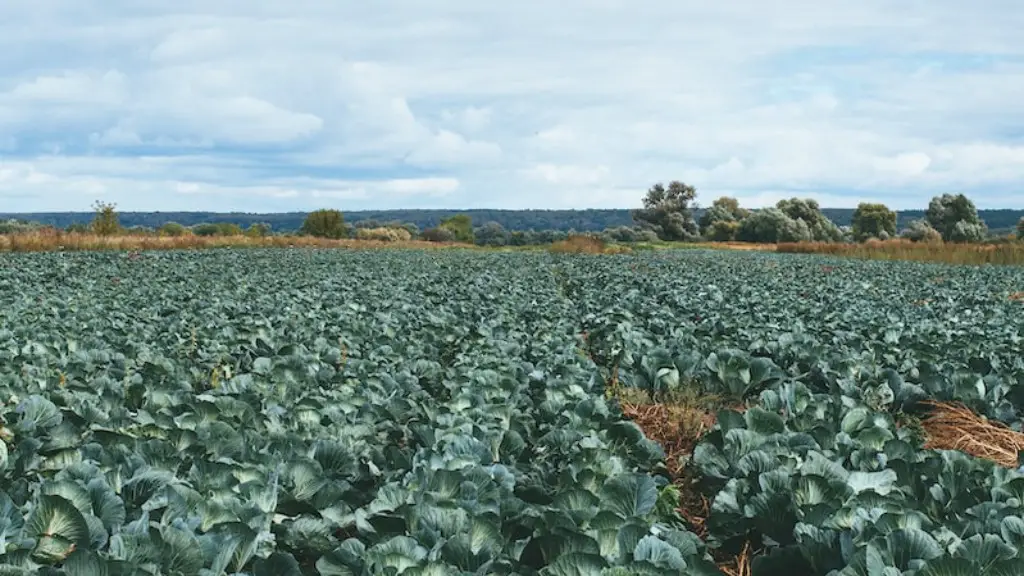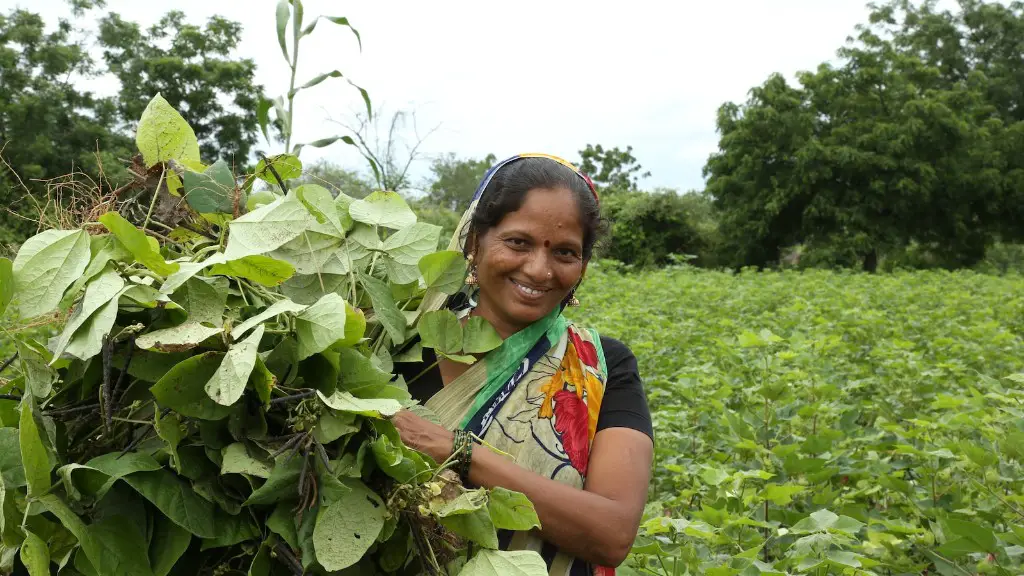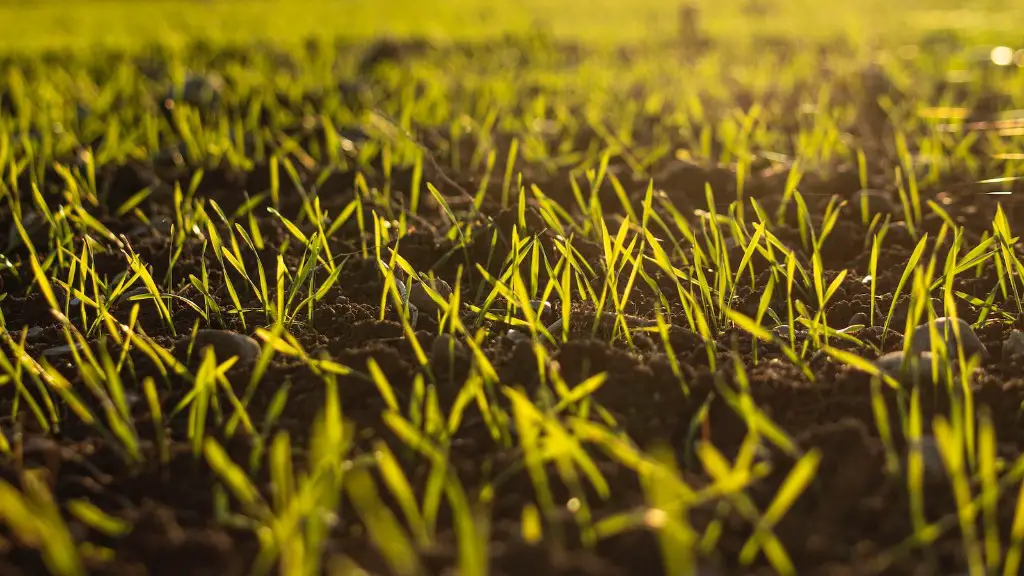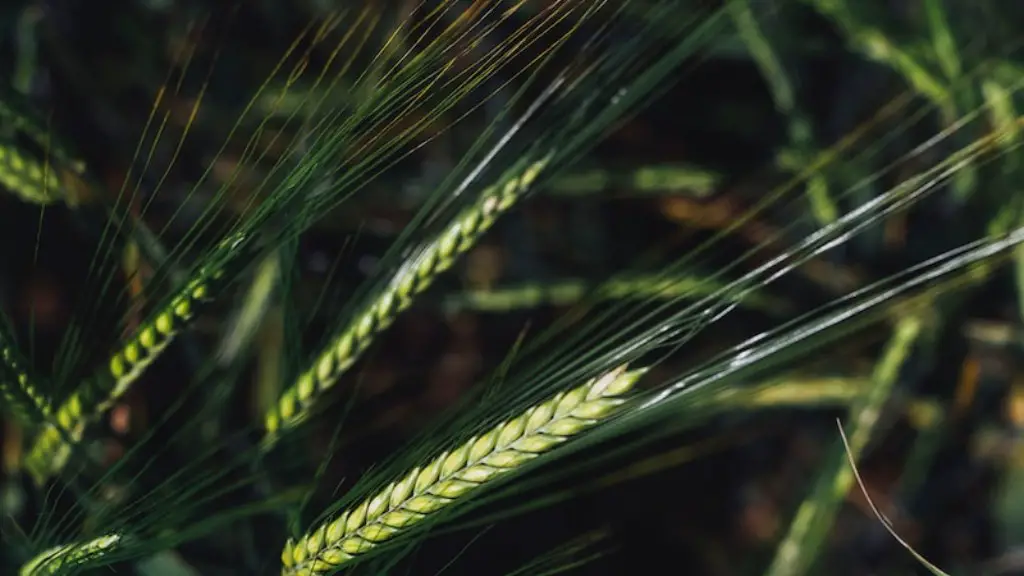Agriculture has seen remarkable advancements in recent years with the introduction of precision agriculture, gene editing, hydroponics, and automation. Precision agriculture, also known as satellite farming, is a way to increase crop yields and decrease input costs by identifying the most appropriate farmland areas to plant seeds based on soil type, topography, rainfall, and other localized factors. Gene editing is the process of changing the genetic makeup of an organism in order to achieve desirable traits and outcomes. With the implementation of gene editing, farmers are able to modify and adapt plants to thrive in harsher climates and increase the nutritional content of food. Hydroponics is a method of growing plants without the use of soil and instead using water or other mediums. This technology allows plants to be grown in areas where normally there would not be soil available such as rooftops and concrete. Automation is also changing the way agriculture is practiced with the introduction of autonomous tractors and other machines that reduce labor costs and increase efficiency. These developments in agriculture have revolutionized the farming industry, creating a more sustainable and efficient process for farmers.
Climate Resilience
Climate change is a major challenge for modern agriculture. An increase in temperatures, changes in soil fertility, droughts, and floods strees the production and can limit yield. To become more resilient to this extreme weather, farmers must adopt innovative solutions. Crop rotation is a method that has been traditionally used to improve soil nutrition and reduce the risk of pests. Scientists have integrated this technique with modern technology such as remote sensing and satellite imaging to allow farmers to make more informed decisions about their crop rotation plans. Cover crops have also been introduced to farmers in order to improve soil health and resist pests and extreme weather.
Additionally, farmers have adopted conservation agriculture options such as no-till and minimum till farming. These methods reduce tillage and help conserve organic matter and soil structure. Some farmers have implemented predator insects to control pest populations and reduce the amount of synthetic pesticides needed. Lastly, with the rise of artificial intelligence, farmers are able to track and measure productivities more accurately, helping them make data-driven decisions about their farming practices.
Facilitated Markets
The ever-increasing population has created a strong demand for food, and this demand has driven the need for more efficient methods to get food from farm to plate. This became especially evident during COVID-19 when many nation’s food supply was disrupted. To ensure that the food industry runs more smoothly, many governments have implemented facilitative markets that provide a direct line between farmers and consumers. These markets give farmers more control over their pricing and help them to reduce distribution costs.
New technologies such as blockchain have enabled farmers to track the entire supply chain and monitor the quality of their product. This improves transparency and trust between farmers and consumers. Additionally, with the implementation of logistic tools such as drones, farmers can reduce distribution costs and track their product more accurately, reducing the potential for wasted product.
The launch of online stores, mobile apps, and other e-commerce platforms have revolutionized the way farmers are able to sell their product. By cutting out the middleman, farmers can make sure that they are earning the maximum return for their product and also reduce their marketing costs. By creating a more direct relationship with consumers, farmers are able to communicate the story behind their product more effectively.
Data-driven Agriculture
Data-driven agriculture has emerged as a key component of modern farming. With the introduction of the internet, farmers now have access to a wealth of data on the weather, soil data, and crop yields that can help them make better decisions. Farmers have begun to use predictive analytics to better predict and manage crop yield.
To maximize efficiency, farmers are now using sensors, cameras, and drones to monitor their crops. This technology gives farmers valuable insights into the health of their crops and helps them make informed decisions about irrigation, fertilization, and pest control. Furthermore, data gathered from satellite images can give farmers detailed insights into the health of their land and help inform their decisions on when to plant, how much to plant, and where to plant.
In many parts of the world, machine learning, artificial intelligence, and blockchain have become increasingly popular tools for farmers. These technologies are helping farmers to automate labor intensive tasks such as identifying weeds, and they are also helping farmers to track and monitor their inventory more effectively.
Precision Fertilization Techniques
Precision fertilization techniques are being developed to provide a more efficient way to fertilize crops without sacrificing yield. With the implementation of this technology, farmers have been able to optimize their fertilization program and reduce inputs costs. Sensors placed in the soil are able to monitor nutrient levels and provide detailed insights on when to fertilize and how much fertilizer to use.
Additionally, scientists have developed precision-ag systems that allow farmers to adjust their fertilizer applications according to soil nutrient levels and the needs of the specific crop. These systems give farmers more control over the amounts of nutrients added and reduce the potential for over fertilization which can lead to environmental concerns such as water pollution.
Organic fertilizers have also gained popularity as an alternative to synthetic fertilizers. These organic fertilizers are naturally derived from animal and plant matter and are shown to be more sustainable and less harmful to the environment. Furthermore, organic fertilizers are better able to trap carbon which can improve soil fertility and overall crop health.
Precision Pest Management Techniques
Precision pest management techniques are a way that farmers can reduce their reliance on harmful and expensive synthetic pesticides. To help minimize plant damage from pests, farmers have begun to use natural predators such as ladybugs and parasitic wasps to reduce pest populations. Augmented reality can also be used to spot and identify pests more accurately, reducing the number of unnecessary pesticide applications.
Integrated pest management systems can be implemented to identify areas in the field where pests gather and help farmers to determine the best course of action for treating the affected areas. Additionally, with the rise of artificial intelligence, remote sensing, and drones, farmers are able to better track pest populations and reduce the number of pesticide applications needed. Lastly, predictive analytics and machine learning can help farmers to forecast pest outbreaks and prepare with preemptive treatments.
Agricultural Automation
In recent years, agricultural automation has become increasingly popular as a way to reduce labor costs and increase yield. Autonomous tractors and other machines are used by farmers to increase the speed and accuracy of planting, harvesting, and cultivating crops. This technology also reduces the potential for human error and reduces the need for labor intensive work such as weeding and spraying.
Data-driven decision making systems are also being used by farmers to automate crop management. This system helps farmers to optimize their irrigation schedules, fertilization protocols, and pest management strategies. Additionally, robotics are being used to perform tasks such as harvesting and sorting produce.
Artificial intelligence and machine learning have become important tools for analyzing large amounts of data and identifying patterns. This technology is helping farmers to manage their crops more efficiently by providing more accurate predictions about crop yields and helping them to make better decisions about their farming practices.
Water Management
Water management is an important factor in modern agriculture. Climate change has created more erratic patterns of precipitation and drought, resulting in severe water shortages in some parts of the world. To increase resilience to this extreme weather, farmers have been experimenting with various methods of water conservation. Drip irrigation systems are being used to limit the water used for each plant by delivering water directly to the roots. Alternatively, farmers have implemented methods such as rainwater harvesting and condensation collection to collect water.
Additionally, farmers are now using moisture sensors to monitor the water content in the soil and adjust the water applied according to the exact needs of their crops. Aeroponics and hydroponics are also being utilized to grow crops without soil and reduce the water used in traditional farming methods. Lastly, data-driven decision making systems are being used to help farmers predict water needs, optimize their irrigation systems, and plan when to irrigate their fields.




